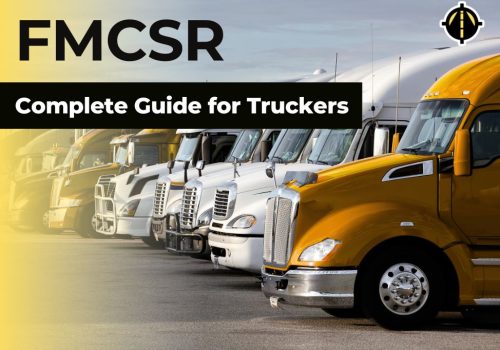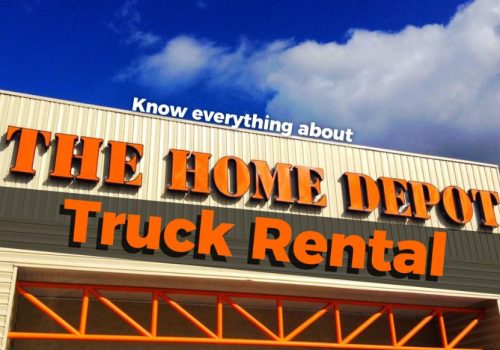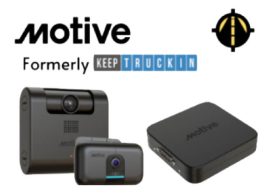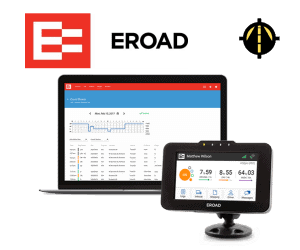The Electronic Logging Device (ELD) Mandate isn’t just one more rule to check off your list. It’s a big change in the way truck and bus drivers will record their driving time.
While there’s a main rule that covers the whole country, each state might have its own special rules too like California ELD Mandate. This is especially true for places with a thriving trucking industry.
I remember when I first dived into fleet management, these state-specific rules were quite confusing. It wasn’t just about ensuring trucks were operational or routes were efficient. It was also about ensuring every log, every hour, every mile complied with not just one, but potentially multiple sets of rules.
These rules could be different depending on the state. The rules in California are pretty specific, and that’s why they’re so important.
Unlike the federal mandate, California’s ELD Mandate, set to be enforced from January 1, 2024, aims to bring intrastate carriers under similar regulatory scrutiny. This change, while seemingly straightforward, carries with it a host of implications, challenges, and opportunities for the trucking industry.
The Genesis of California’s ELD Mandate
Historically, California has often been a trailblazer in implementing environmental and safety regulations. However, in the case of the ELD mandate, the state is somewhat behind its usual pace.
As per the California Highway Patrol (CHP), the state’s regulations currently do not require an ELD for recording a driver’s Record of Duty Status (RODS) for intrastate travel, which is not in alignment with FMCSA federal regulations.
The upcoming mandate is expected to impact a significant portion of the trucking sector.
An estimated 53.9% of approximately 366,800 drivers, equating to around 197,043 vehicles, are anticipated to be affected by this new rule. These numbers reflect the sizable task ahead for many fleet operators who will need to adopt ELD technology in a relatively short time frame.
Understanding California’s 2024 ELD Mandate
The California ELD Mandate, in essence, requires trucks and buses operating within the state to be equipped with ELDs. These devices automatically record driving time and hours of service (HOS), ensuring compliance with set regulations.
The federal ELD mandate, which has been in effect for interstate carriers, has already seen widespread adoption, but the inclusion of intrastate carriers marks a significant extension of these rules within California.
The mandate is not without its exemptions. Similar to federal rules, it excludes certain types of driving from ELD requirements, including vehicles that do not operate more than eight days within a 30-day period, those involved in driveaway/towaway operations, and trucks manufactured before 2000.
Moreover, California’s rule differs slightly in terms of the air-mile radius exemption.
While the federal rule exempts drivers from the ELD mandate if their movements are within a 150 air-mile radius of their base of operations, California sets this limit at 100 miles with a 12-hour work limitation.
Benefits of these distinctions include ensuring a higher standard of safety, better environmental outcomes, and more accurate reporting. However, challenges often stem from complexities in compliance. Fleet managers not only have to ensure federal compliance but also need to stay updated with California’s evolving regulations.
One example that stands out is from a colleague of mine. His fleet was perfectly compliant with federal ELD standards.
Yet, on entering California, he was caught off guard by a specific CARB requirement. This oversight led to unplanned downtime for his trucks, translating to delivery delays and financial implications. His story serves as a stark reminder: understanding and respecting state-specific nuances isn’t just a best practice—it’s essential for seamless operations.
The Rationale Behind the Mandate
The primary objective of the California ELD Mandate is to enhance road safety and ensure compliance with hours of service regulations.
This move is part of a broader effort to harmonize state regulations with federal standards.
While the federal mandate has been instrumental in monitoring and enforcing HOS compliance for interstate commerce, extending these requirements to intrastate travel aims to close a regulatory gap that has existed within the state.
Implications of the Mandate for Fleet Operators & Managers
The adoption of the California ELD Mandate necessitates significant operational changes for many fleet operators. For those previously exempt under intrastate regulations, this transition marks a move from traditional paper logging to a technologically driven approach.
The switch to ELDs is not merely a change in record-keeping methods; it’s an integration into a broader digital framework that enhances the accuracy of HOS recording, thereby improving safety and compliance.
However, this shift isn’t without challenges. The initial cost of implementing ELD systems, training staff, and adjusting operational workflows can be substantial, especially for smaller fleets.
Furthermore, the challenge of ensuring that the chosen ELD systems comply not only with federal but also with California-specific requirements adds an additional layer of complexity.
This situation calls for a careful selection of ELD providers who can guarantee compliance with both sets of regulations.
Industry Response and Adaptation
The response from the trucking industry to the California ELD Mandate has been mixed. While many recognize the importance of aligning with federal standards and the safety benefits that ELDs bring, concerns have been raised about the tighter restrictions that come with the state’s 100 air-mile radius exemption.
This discrepancy means that trucks operating solely within California are subject to stricter limits compared to those engaged in interstate activities, even if their operations are confined within the state.
This has led to calls from industry groups, like the Western States Trucking Association (WSTA), for California to align its air-mile exemption with the broader federal limits.
Despite these concerns, the overall sentiment within the industry leans towards preparation and adaptation. Recognizing the inevitability of the mandate, many fleet operators have begun the process of upgrading their systems and educating their workforce about the upcoming changes.
This proactive approach is crucial, as the mandate is not just a regulatory requirement but also an opportunity to enhance operational efficiency and safety standards.
During my interactions with fellow fleet managers, many raised eyebrows about California’s stance on ELDs.
However, once they grasped the state’s deep-rooted commitment to the environment and safety, the surprise morphed into respect. California isn’t just pioneering tech innovations in Silicon Valley; it’s also setting benchmarks in sustainable and safe transportation.
Technology and Compliance: The Role of ELD Providers
As fleets gear up for the California ELD Mandate, the importance of technology providers in ensuring compliance cannot be overstated. In this competitive market, companies like Motive and PeopleNet are at the forefront, offering advanced solutions that cater to both federal and California-specific requirements.
For instance, Motive, known for its user-friendly interface and robust features, has been a popular choice among fleet operators seeking a seamless transition to ELD compliance. Its systems not only ensure adherence to regulations but also offer additional benefits like real-time tracking and fuel consumption monitoring.
Similarly, PeopleNet, with its reputation for reliability and comprehensive customer support, provides a range of ELD solutions that integrate smoothly with existing fleet management systems. Their focus on innovative features, including maintenance alerts, makes them a strong contender for fleets looking to enhance operational efficiency alongside compliance.
When choosing an ELD provider, factors like ease of use, reliability, and specific compliance needs are paramount. Providers like Motive and PeopleNet are paving the way in this regard, demonstrating how ELD systems can be more than just compliance tools — they can be integral parts of a comprehensive fleet management strategy.
Preparing for the Transition: Steps for Fleet Managers
With the mandate’s implementation date nearing, fleet managers in California are in a crucial phase of preparation. To ensure a smooth transition, several key steps are recommended:
 Assessment and Planning:
Assessment and Planning:
Conduct a thorough assessment of current fleet operations to understand the specific needs and challenges in complying with the mandate. This step includes evaluating the current status of ELD usage and identifying gaps in compliance.
 Selecting the Right ELD Provider:
Selecting the Right ELD Provider:
As mentioned earlier, choosing an ELD provider that meets both federal and California-specific requirements is critical. This decision should be based on a careful evaluation of the provider’s reliability, compliance track record, and customer support services.
 Training and Education:
Training and Education:
Organize comprehensive training programs for drivers and administrative staff to familiarize them with the new ELD systems and compliance requirements. This training should cover not only the technical aspects of using ELDs but also the regulatory context and the importance of accurate HOS recording.
 Testing and Implementation:
Testing and Implementation:
Before fully implementing the new ELD systems, conduct pilot tests to identify any operational issues and ensure that the systems are fully functional and compliant. This step is crucial for mitigating risks and addressing any potential problems early in the process.
 Ongoing Compliance Monitoring:
Ongoing Compliance Monitoring:
Establish a system for continuous monitoring and auditing of ELD data to ensure ongoing compliance. This process should include regular checks and updates as regulations and technology evolve.
Challenges and Opportunities for Small and Large Fleets
The impact of the mandate varies between small and large fleet operators. For small fleets, the challenges are often more acute, primarily due to resource constraints. The financial and operational burden of implementing ELDs can be significant for these operators.
However, the mandate also presents an opportunity for small fleets to modernize their operations, potentially leveling the playing field with larger competitors who have already embraced digital log-keeping.
Large fleets, many of which have already integrated ELD systems due to interstate operations, might find the transition smoother. However, they must ensure that their existing systems align with California’s specific requirements and stay abreast of any regulatory updates.
FAQs about the California ELD Mandate
Is it true that all trucks in California will need ELDs by 2024?
Yes, it’s true. Starting January 1, 2024, the California ELD mandate requires all commercial trucks operating within the state to be equipped with electronic logging devices, aligning state regulations with federal standards.
When does the California ELD mandate start?
The California ELD mandate is set to take effect on January 1, 2024.
Is the California ELD mandate the same as the federal ELD mandate?
While the California ELD mandate aligns largely with the federal ELD mandate, there are specific differences, such as exemptions and air-mile exclusions that are unique to California.
What is the air-mile exclusion?
The air-mile exclusion refers to the distance and time limit within which certain drivers can use paper logs instead of ELDs. California’s ELD mandate sets this exclusion at 100 air-miles and a 12-hour work limit, which is stricter compared to the federal standard of 150 air-miles and 14-hour limit.
Who is exempt from the California ELD mandate?
Exemptions include drivers operating within California’s 100 air-mile radius, drivers of vehicles manufactured before 2000, those in driveaway/towaway operations, and drivers not operating more than eight days within any 30-day period.
How will the California ELD mandate affect short-haul drivers?
Short-haul drivers in California face stricter limits under the new ELD mandate. They are subject to the 100 air-mile radius and 12-hour work limit, compared to the federal 150 air-mile and 14-hour limit.
Are there any specific requirements for ELD devices under the California mandate?
ELD devices in California must meet both federal and state-specific requirements. This includes accurate HOS recording, real-time data transmission capabilities, and compliance with California’s air-mile exclusion rules.
What are the penalties for violating the California ELD mandate?
Penalties for violating the California ELD mandate can include fines, out-of-service orders, and potential impacts on a carrier’s safety score. These are similar in nature to the penalties under the federal ELD mandate, emphasizing the importance of compliance.
Conclusion: Embracing Change for a Safer Future
As we look towards the January 1, 2024 deadline, the California ELD Mandate stands as a significant regulatory milestone in the trucking industry. It represents a convergence of safety, compliance, and technology, aimed at fostering a safer, more efficient, and environmentally responsible industry.
For fleet managers, drivers, and other stakeholders, understanding and adapting to this mandate is not just a regulatory necessity but an opportunity to be part of a larger movement towards safer and more sustainable transportation.
In embracing the California ELD Mandate, the trucking industry is not only complying with a set of regulations but also contributing to a culture of safety and sustainability.
This journey, though complex, paves the way for a future where the roads are safer, operations more efficient, and the environmental footprint of the trucking industry significantly reduced. The road ahead is clear: stay informed, stay compliant, and drive towards a better tomorrow.





 Selecting the Right ELD Provider:
Selecting the Right ELD Provider: Training and Education:
Training and Education: Testing and Implementation:
Testing and Implementation: Ongoing Compliance Monitoring:
Ongoing Compliance Monitoring:










 Answer 5 simple questions to request a
Answer 5 simple questions to request a